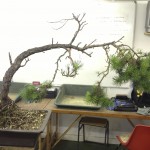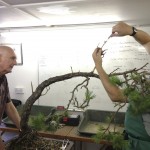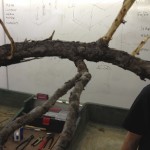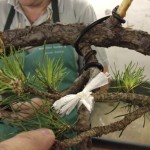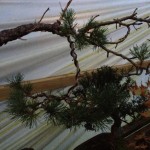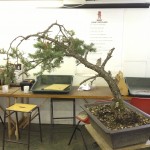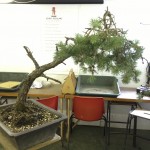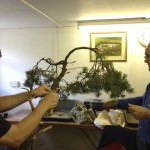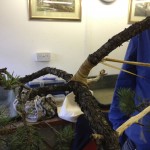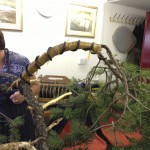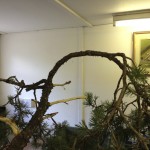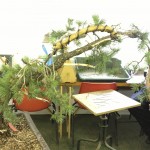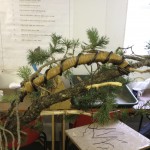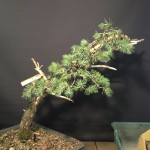An open window into the comings and goings of students and their trees attending our regular weekend and midweek bonsai classes under the ever watchful eyes of John Hanby.
Classroom Corner – Academy Class – Yamadorii Pines
On a recent Academy Level Six session I divided the class into two groups and provided each group with similar yamadorii Pinus Sylvestris. Both trees were originally collected on the Alps and were in a batch of similar material which arrived at our nursery some 7/8 years ago.
The trees were potted into these plastic bonsai training pots about 5 years ago. The trees struggled for a period after the repot but had now recovered and grown well with many new strong buds apparent.
Each tree had good green foliage and excellent mature bark but the trunks were long and relatively thin with most of the branches a long way from the tree’s base. The students were tasked with finding a solution in order to style the trees.
Tree A
This long arching trunk has heavy hanging foliage over to the right and far away from the tree’s base and pot. The lowest branch which is nearest the base could be used in styling the tree but it is very thin and only has foliage at it’s tip.
Solving this problem would involve grafting another branch onto the existing branch to create denser foliage nearer the trunk. The angle of the trunk could then be altered more vertically as required to create a tree more in the literati style but with an adequate amount of foliage to form a triangular canopy around the trunk.
The branches were wired for health reasons so that the tips could face the light rather than dangling towards the ground.
Tree B
This tree is similar in appearance but does have more useable foliage closer to the trunk.
The upper part of the trunk carrying the foliage is quite thick but with the right technique could be bent back almost 180 degrees to bring the foliage in a lower position surrounding the trunk.
Longitudinal wires would have to be used in addition to the normal wiring and the upper branch would also have to be wrapped with raffia. Once this work was done the branch was carefully bent over into position and it moved without any problems.
Unused branches were made into deadwood whilst all the remaining live branches were wired in the normal manner. The branches were then positioned to provide a neat triangular canopy of foliage around the trunk.
Suddenly we have a very plausible compact image in the Japanese bonsai style. The leggy tree we started with has disappeared. In the future when the raffia is removed and the canopy becomes denser this image will look even better and more natural.
This was an excellent academy session. Two similar difficult trees had to be dealt with using different methods to find a solution, both perhaps a little drastic, but at least now both trees have a future we can all look forward to seeing…….

